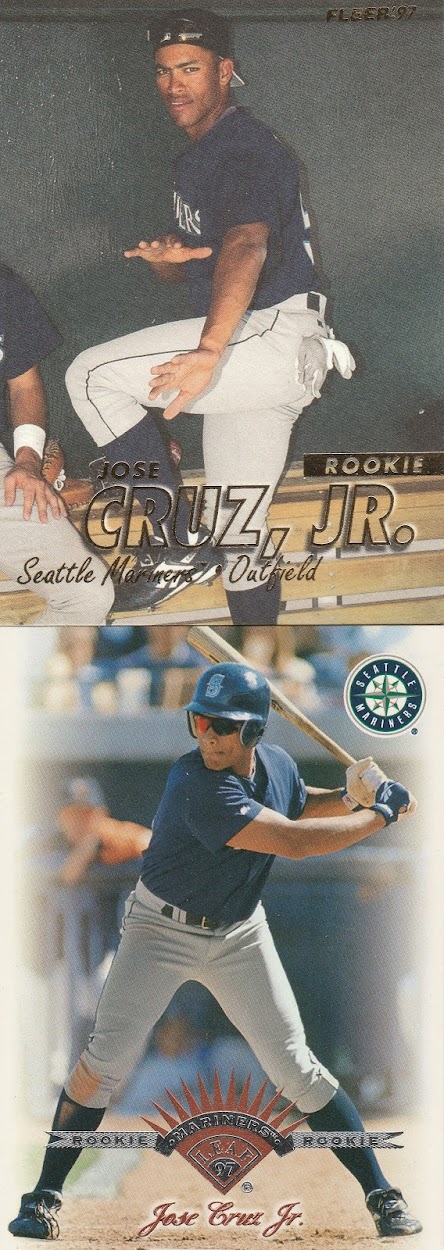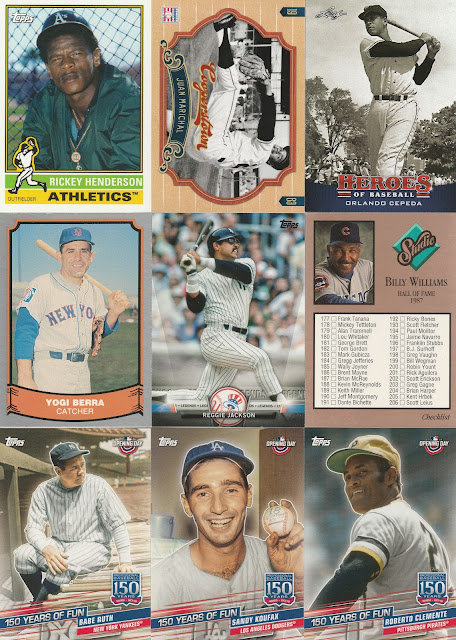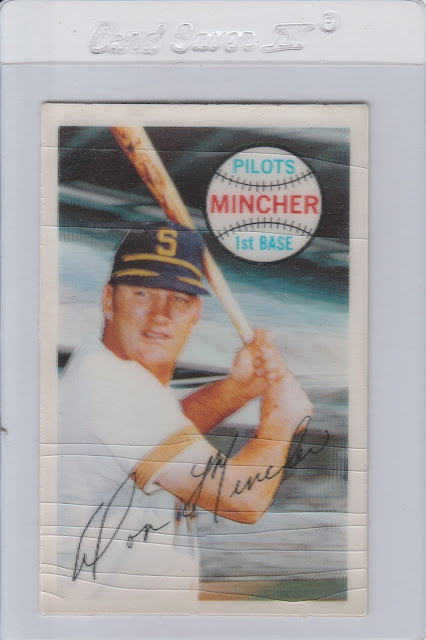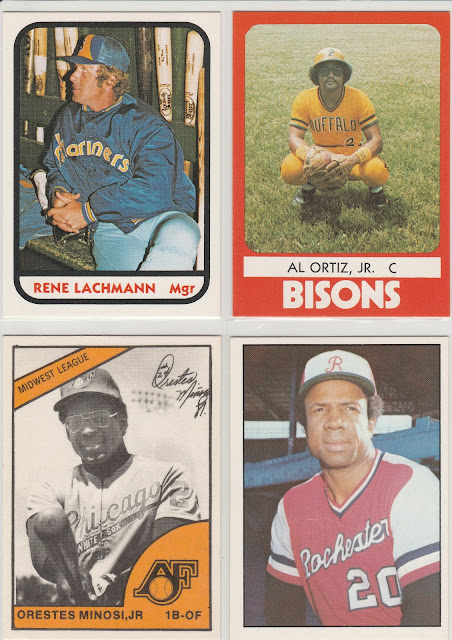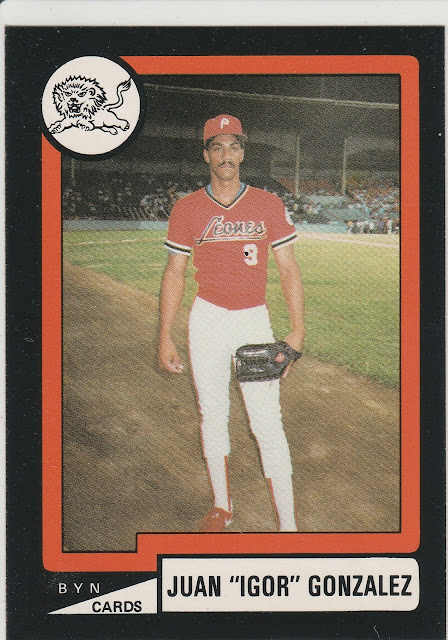This is a series of posts on a 1980's Frankenset. Each page features a different team, with 9 of my personal favorite cards from that year's team. You might find players repeated, you'll definitely see brands repeated, but hopefully you'll agree that there are some interesting selections from the 1980s!
In 1981, the Cubs finished 6th in the NL East, posting a losing record in both halves of the season. The team dumped their General Manager in May, opting to go with no GM until the off season, when they would hire Dallas Green to take the helm. The delay had a lot to do with the team's ownership transition - the Wrigley family was out by the end of the 1981 season, with team ownership now handled by the Tribune Company.

The new owners were in the right place and the right time for two franchise altering moves. In January of 82, the Cubs swung a trade with the Phillies to acquire 22 year old prospect Ryne Sandberg. The Tribune Company already controlled the broadcast rights, and the Chicago flagship news and entertainment channel WGN. WGN-TV would broadcast Cubs games all season, with a new announcer who moved across town from the White Sox booth, the legendary Harry Caray. Even though Sandberg had a promising rookie campaign and Caray was bringing his 7th Inning Stretch tradition to Wrigley Field, the team did not fare much better than they did the year before. They would now finish 5th in the NL East, allowing for the familiar refrain of waiting til next year for the "Lovable Losers."
The Cards:
Donruss #151 Leon Durham - The "Bull" was the Cubs' everyday Right Fielder in '81 and '82. He was the team's premier power hitting threat, leading the team in homers both seasons. His 1982 season was very impressivc - his triple slash of .312/.388/.521 were all career highs, and he was an All-Star and Silver Slugger in the outfield. Durham also had a career high 28 stolen bases, presenting a strong balance of speed and power. Durham was a 10 year MLB veteran and was just shy of 1,000 career hits, scoring over 500 runs and driving in 530 more.
Topps #484 Ivan DeJesus - DeJesus was the big name returned to the Phillies in exchange for Ryne Sandberg, and at the time there was a lot to like from the Phils perspective. They were obtaining an everyday short stop with speed and defense in exchange for a prospect that to that point had not made the case he could stick at short. DeJesus was a Dodgers' prospect in his own right, traded to the Cubs in 1977 because he was blocked by the steady and talented Bill Russell. He would lead the NL in Runs scored in 1978 for the Cubs, and twice stole 40+ bases in a season. Following the trade, he would put in a pair of good seasons for the Phillies, but at that point he was near the tail end of his playing days. Nicknamed "El Pulpo" (The Octopus), DeJesus led the NL in assists twice, and putouts by a Shortstop in 1981. He would go on to success as a manager in the minors.
Fleer #601 Jerry Morales - 81/82 was Jerry's 2nd tour with the Cubs, having played with them previously from 1974 through 1977. '77 was his All-Star season, when he hit a career high .290 as the team's Center Fielder. He was the NL leader at the break with a .331 average. The All-Star game itself was maybe not the best memory, as Goose Gossage knee-capped him with a fastball in his lone plate appearance. Morales was a star in Puerto Rico's Winter Leagues and is widely considered to be one of the finest fielders in that league's history. Morales retired after 15 MLB seasons, having hit 95 career homers and drove in 570 runs.
Fleer #588 Bobby Bonds - The final 45 games of Bobby Bonds' career were as a Chicago Cub in 1981. Bonds was known in his prime as one of the best base stealers and power hitters in the big leagues. Bonds had over 330 Homers and more than 450 steals in career, while also driving in over 1,000 runs. By the 1981 season, Bonds had been relegated to a reserve role, and was caught stealing more times than he was successful. He was a 3 time all-star (the MVP of the 1973 midsummer classic), a 3 time gold glove winner, and led the NL in runs scored twice.
Fleer #587 Tim Blackwell - The mustache that launched 1,000 ships! Blackwell is known for that bushy soup strainer, but also had a lengthy career in baseball as a catcher, then as a manager throughout the minor leagues. 1980 was his best season, catching in 103 games for the Cubs, and setting career highs in nearly every offensive category. Credit is due to his hitting instructor Cubs great Billy Williams for re-tooling his swing, allowing him to be more successful. Blackwell was also known as great defender behind the dish, and led the NL in double plays in 1980, thanks to his strong arm. Blackwell's last games came in 1983 with the Angels' AAA team, which is also where he began his coaching career.
Fleer #589 Bill Buckner - Buckner's ankle and foot issues were already long chronicled by the early 80s, but he surprised many by stealing 15 bases in 1982 to go with 15 homers. Buckner was a doubles hitter, leading the NL in that category in 1981 and 1983, and had 498 2-baggers in his career. His lone All-Star appearance came in 1981, when he hit .301 and was a doubles machine. 1982 was a year of firsts, Buckner had his first of 2 200+ hit seasons, and topped 100 RBI for the first time in his career. People will remember him for the error in the 1986 World Series, but the fact is Buckner was a good to great first baseman once he moved to that position from the outfield. He was at or near the top of the leaderboards for assists, putouts, and range factor.
Donruss #504 Doug Bird - Bird was a league leader in 1982, though not in favorable categories - he led the NL in homers allowed, and also earned runs allowed. On the bright side, he committed 0 errors in the field and he led the league in lowest walk rate for the 2nd time in his career. Bird started his career in Kansas City as a reliever, garnering 20 saves as a rookie in 1973. Bird was the Cubs' Opening Day starter in 1982, going 7 solid innings and earning the win. Bird came to the Cubs from the Yankees in 1981 in a trade that netted the Yankees Rick Reuschel.
TCMA Baseball's Greatest Hitters #7 Lou Brock - Is this a Cubs card? Is this a Cardinals card? No matter where you stand, Lou Brock probably could've made it there before you. Brock was the All-time stolen base leader for both a single season, and for a career when he retired. The Cubs 1982 trade for Ryne Sandberg may be the one that finally atoned for the Lou Brock trade that send the speedy outfielder to the Cardinals in 1964. The Hall of Fame outfielder is a member of the 3,000 hit club and was a 6 time All-Star. He was named the 1974 MLB Player of the Year by the Sporting News.
Fleer #590 Bill Caudill - Caudill had a career year in 1982 - just not for the Cubs. He was traded to the Yankees before the year began, then was flipped to Seattle, where he appeared in 70 games. He had a 12-9 record and a 2.35 ERA. Caudill was a prankster, the most publicized prank was stealing the keys to the "tugboat" the Mariners brand new bullpen car on Opening Day. He earned the nickname "Inspector" for taking a magnifying glass to opponent's bats, looking for hits. His entry music from the bullpen was "The Pink Panther Theme." "You've got to have fun to win," said Caudill. Caudill was also famously one of the first clients of super-agent Scott Boras!






